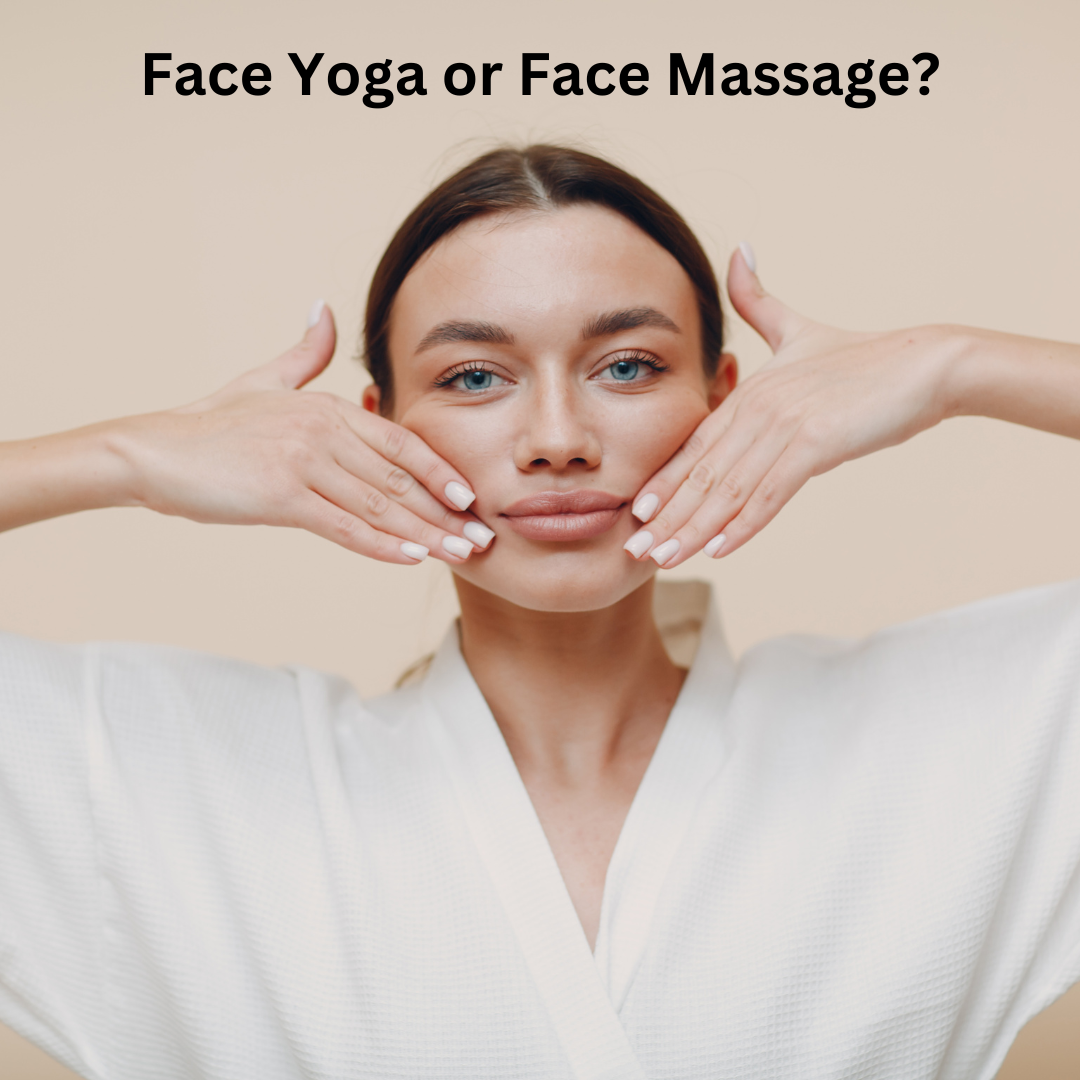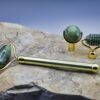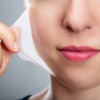- Empty cart.
- Continue Shopping
Face yoga or Face Massage: which will be the best option for me?

What is Face yoga?
Face yoga, also known as facial exercises or facial yoga, involves a series of exercises and massage techniques designed to tone, strengthen, and rejuvenate the muscles in the face and neck. These exercises target specific areas of the face to address concerns such as wrinkles, sagging skin, puffiness, and overall facial muscle tone.
Face yoga typically includes a variety of movements and poses that engage the facial muscles, similar to how traditional yoga poses target specific muscle groups in the body. These exercises may involve movements such as smiling widely, puffing out the cheeks, raising and lowering the eyebrows, and making exaggerated facial expressions.
Additionally, face yoga often incorporates massage techniques to stimulate circulation, promote lymphatic drainage, and relax tense facial muscles. These techniques may include gentle tapping, kneading, and stroking motions applied to the face and neck using the fingertips or specialized facial tools.
What is face Massage?
A face massage involves the manual manipulation of the facial muscles and skin through various techniques to improve circulation, promote lymphatic drainage, and relax tense facial muscles. It’s a therapeutic practice that can be performed by a professional esthetician during a facial treatment or as part of a self-care routine at home.
Here are some common techniques used in face massages:
- Stroking: Gentle, gliding movements are applied to the face using the fingertips or palms to help relax facial muscles and improve blood flow.
- Kneading: This technique involves gently lifting and squeezing the facial muscles between the fingertips or palms to release tension and promote relaxation.
- Tapping: Light tapping or drumming motions are applied to the face using the fingertips or knuckles to stimulate circulation and awaken the skin.
- Pinching: Delicate pinching motions are used to stimulate acupressure points on the face, promoting energy flow and relieving tension.
- Rolling: Specialized facial massage tools, such as jade rollers or gua sha stones, are used to gently roll and massage the skin, promoting lymphatic drainage and reducing puffiness.
- Pressure points: Specific pressure points on the face and neck are targeted with firm pressure to release tension, stimulate circulation, and promote relaxation.
Face massages can be performed using various mediums, such as facial oils, serums, or moisturizers, to enhance glide and provide additional nourishment to the skin. The pressure applied during a face massage is typically gentle and soothing, although it can be adjusted based on individual preferences and sensitivity levels.
Face yoga or Face massage?
The choice between face yoga and face massage depends on your personal preferences, skincare goals, and individual needs. Both techniques offer unique benefits and can be effective in improving the appearance and health of your skin. Here are some considerations to help you decide which option may be best for you:
-
Face Yoga:
- Best for: Those who enjoy incorporating movement and exercise into their skincare routine and prefer an active approach to facial rejuvenation.
- Benefits: Face yoga exercises can help tone and strengthen facial muscles, reduce the appearance of wrinkles and fine lines, promote relaxation, and provide a natural face lift effect.
- Considerations: Face yoga requires consistent practice and may take time to see noticeable results. It may not be suitable for individuals with certain medical conditions or those who prefer a more passive skincare approach.
- Timeframe: Typically, exercises are done for a few minutes each, totaling 10–20 minutes daily.
-
Face Massage:
- Best for: Individuals who prefer a more relaxing and passive approach to skincare and enjoy the therapeutic benefits of massage.
- Benefits: Face massage can improve circulation, promote lymphatic drainage, reduce puffiness, relieve tension and stress in facial muscles, and enhance the absorption of skincare products.
- Considerations: Face massage may require the use of specialized tools or products, such as facial oils or serums. While it can provide immediate relaxation and visible improvements in skin texture, its effects may be temporary and require regular maintenance.
- Timeframe: Can last anywhere from 5 minutes for a quick self-massage to an hour with a professional.
Ultimately, the best option for you may depend on your skincare goals, lifestyle preferences, and how your skin responds to each technique. Some people may choose to incorporate both face yoga and face massage into their skincare routine to enjoy a comprehensive approach to facial rejuvenation. Experimenting with different techniques and observing how your skin responds can help you determine which option works best for you.
Both are Important and beneficial in long run
Here are some easy steps showing how you can easily incorporate both in our daily routine.
Here are easy steps:
- Set a Time: Choose a consistent time each day, like morning or evening, to perform facial exercises and massage.
- Clean Your Face: Start with a clean face to ensure better absorption of any products and to prevent breakouts.
- Warm-Up: Gently pat your face to increase blood circulation and prepare your muscles.
- Facial Yoga:
- Forehead Smoothing: Place your fingers on your forehead and gently pull the skin outward while raising your eyebrows.
- Cheek Lifting: Smile widely and press your fingers into your cheeks, lifting them upwards.
- Jawline Tightening: Tilt your head back and move your lower jaw forward, holding for a few seconds.
- Face Massage:
- Apply Oil/Serum: Use a small amount of facial oil or serum for better glide.
- Circular Motions: Use your fingertips to massage in small, circular motions, starting from the center of your face and moving outward.
- Pressure Points: Gently press and release key areas like temples, under the eyes, and along the jawline.
- Hydrate: Drink plenty of water throughout the day to keep your skin hydrated and healthy.
- Consistency: Repeat these steps daily for the best results.
By integrating these steps into your routine, you’ll promote a healthier, more toned face.






